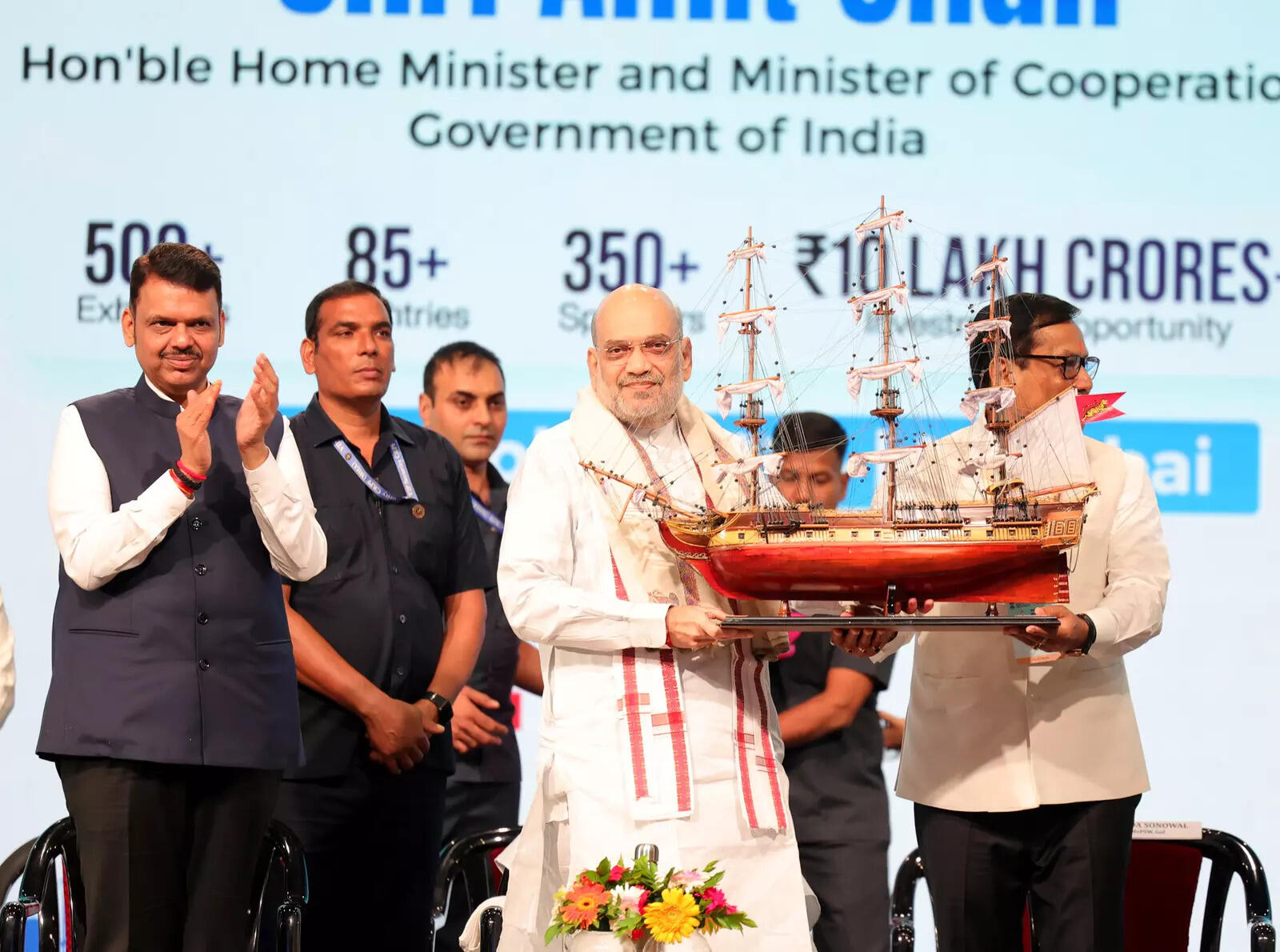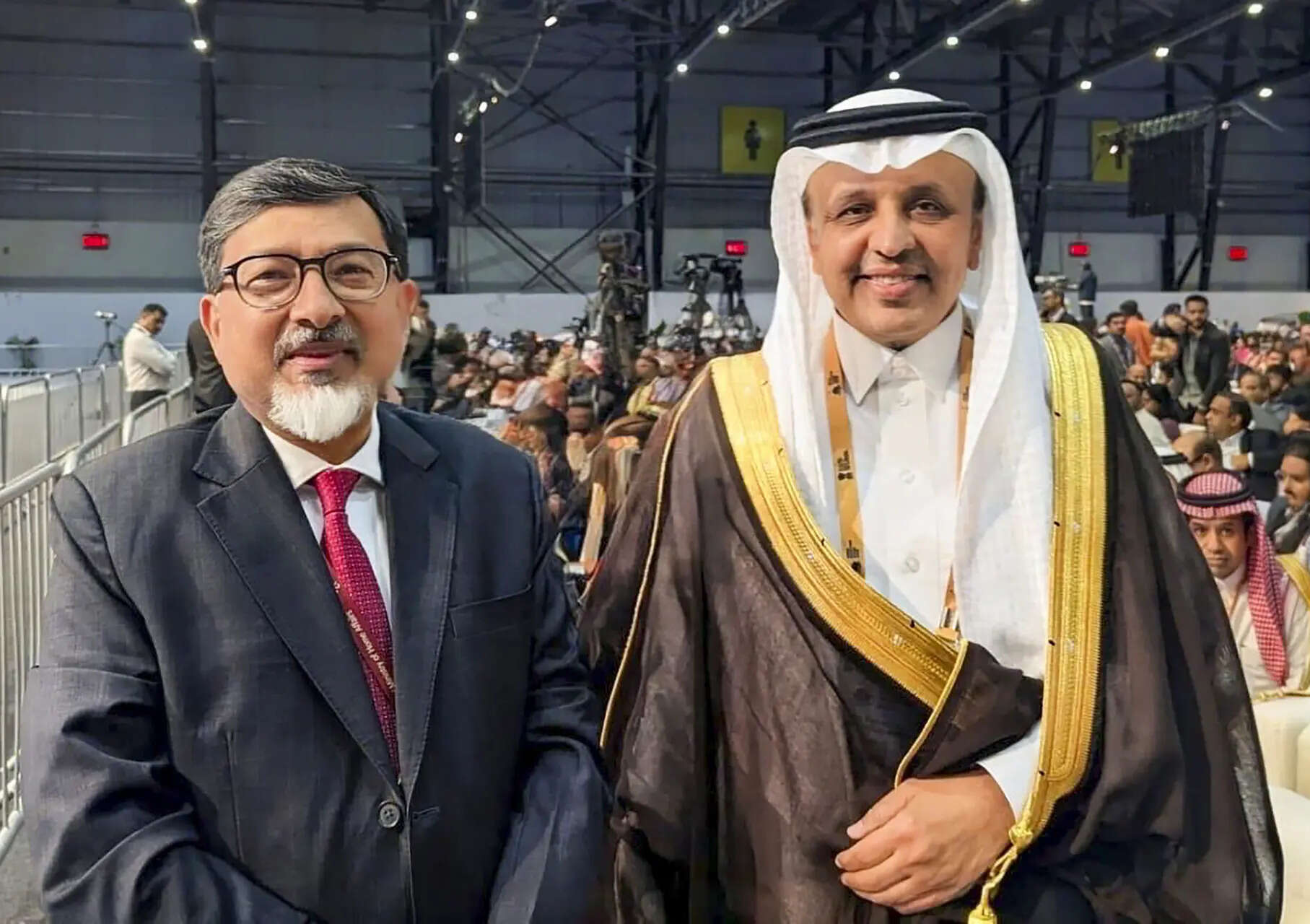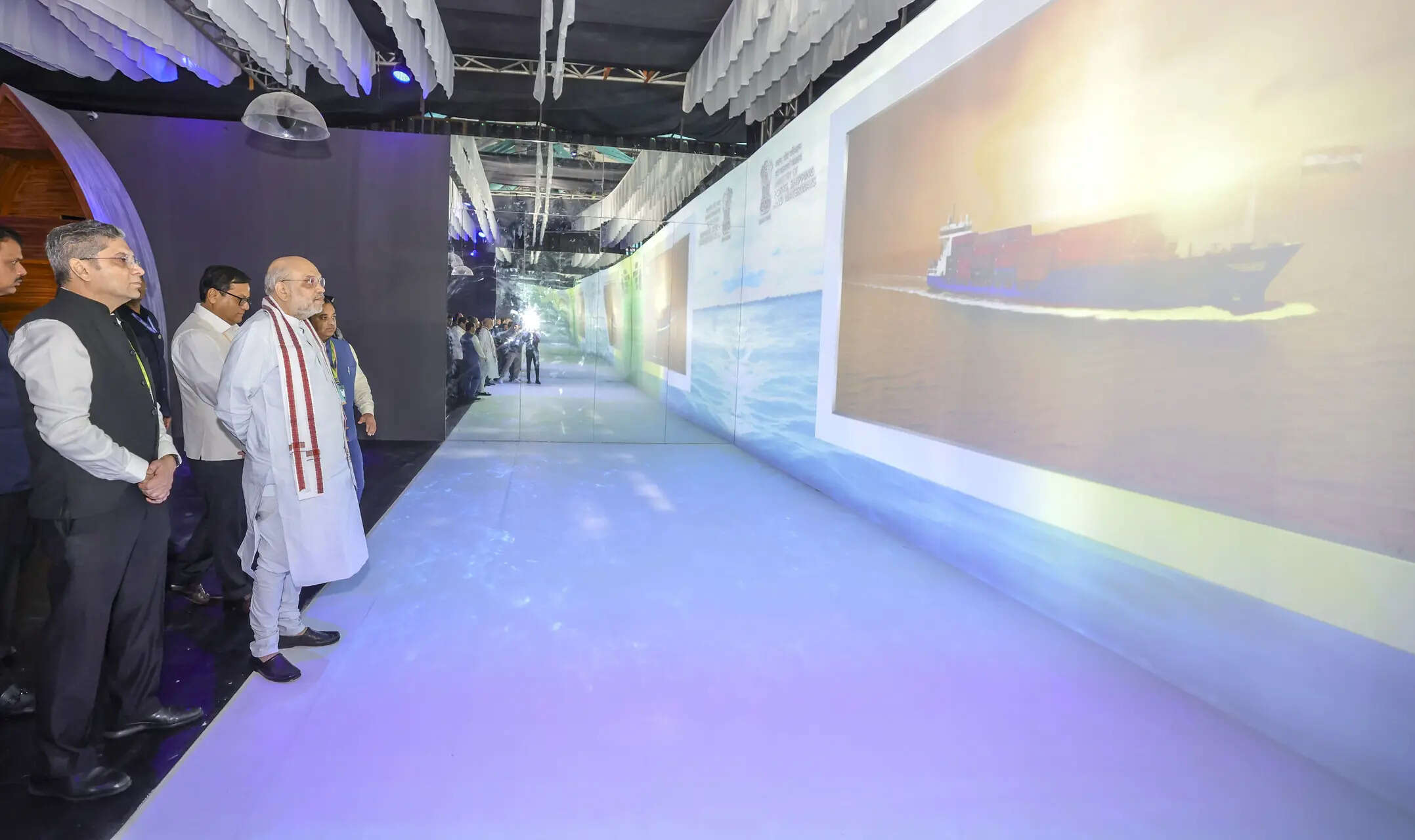
India’s maritime ambitions took center stage as Union Home Minister and Minister of Cooperation Amit Shah inaugurated India Maritime Week 2025 in Mumbai on October 27.
The event, which convened leaders from over 100 countries, marked a defining moment in India’s evolving maritime strategy—one that seeks to transform the “Gateway of India into the Gateway of the World.”
The inauguration ceremony was attended by several key dignitaries, including Maharashtra Chief Minister Devendra Fadnavis, Gujarat Chief Minister Bhupendra Patel, Goa Chief Minister Dr. Pramod Sawant, Odisha Chief Minister Mohan Charan Majhi, Maharashtra Deputy Chief Ministers Eknath Shinde and Ajit Pawar, and Union Minister for Ports, Shipping and Waterways Sarbananda Sonowal.
India’s Maritime Moment
Addressing the gathering, Amit Shah described the occasion as “India’s Maritime Moment,” emphasizing that the reforms of the last decade have positioned India as an emerging maritime power.
“Mumbai, home to the iconic Gateway of India, now symbolizes the Gateway of the World. Based on the deep structural reforms implemented under Prime Minister Narendra Modi’s leadership, India stands with full strength on the global maritime map,” Shah said.
He noted that India’s coastline—stretching over 11,000 kilometers and encompassing 13 coastal states and union territories—accounts for nearly 60 percent of the national GDP. The Exclusive Economic Zone (EEZ), covering 23.7 lakh square kilometers, attracts investors and manufacturers from across the world.
Highlighting India’s growing strategic role, Shah remarked: “Leveraging its maritime position, democratic stability, and naval capabilities, India acts as a bridge between the Indo-Pacific and the Global South, fostering development, security, and environmental progress.”
Maritime India Week: A Global Dialogue Platform
Since its inception, India Maritime Week has evolved into a premier platform for global dialogue in the Indo-Pacific region. The 2025 edition, Shah said, will play a decisive role in advancing India’s goal of achieving global maritime leadership by 2047.
This year’s summit brings together over 350 speakers, 500 companies, and more than one lakh delegates, creating potential investment opportunities worth ₹10 lakh crore. The forum will deliberate on infrastructure modernization, port connectivity, sustainable shipping, and blue economy innovation.
“India believes not in competition but in mutual cooperation,” Shah emphasized. “Through this summit, we have created a comprehensive roadmap to link India’s maritime ecosystem with global networks.”
From Sagar to Mahasagar: The Vision of Maritime India
Amit Shah underscored that Prime Minister Modi’s maritime policy rests on three pillars—security, stability, and self-reliance. Initiatives such as Sagarmala, the Blue Economy Mission, and the Green Maritime Vision form part of the broader Maritime India Vision 2030, which aims to place India among the world’s top five shipbuilding nations.
The Home Minister pointed out that India is building new mega and deep-draft ports, digitizing port transport systems, and targeting a port-handling capacity of 10,000 million metric tons annually. Connectivity projects such as the India–Middle East–Europe Economic Corridor (IMEC), Eastern Maritime Corridor, and North–South Transport Corridor are integral to this expansion.
Over the past decade, India’s maritime trade has surged—90% of the nation’s trade and two-thirds of global trade now pass through the Indo-Pacific maritime route.
Shah said that Modi’s doctrine has evolved into MAHASAGAR (Mutual and Holistic Advancement for Security and Growth Across Regions)—a framework symbolizing India’s growing global footprint.
“Prime Minister Modi’s vision of transforming Sagar into Mahasagar will propel India toward becoming a global maritime leader by 2047,” Shah affirmed, noting that the government has increased budgetary allocations sixfold—from $40 million to $230 million.
Maritime Infrastructure and Legislative Modernization

Shah outlined a series of reforms transforming India’s maritime infrastructure. Under the Sagarmala Project, 839 projects worth $70 billion have been identified for completion by March 2025—of which 272 projects worth $17 billion have already been completed.
The $5 billion Great Nicobar Project is underway to enhance India’s global trade capacity, while a $200 million dry dock at Cochin Shipyard is set to become the largest in India.
To strengthen the legal and institutional framework, the government has modernized maritime legislation. The 117-year-old Indian Ports Bill was recently updated, and the Major Port Authorities Act, 2021, has paved the way for granting greater autonomy to ports. Additionally, 106 new waterways have been declared under the National Waterways Act, 2016.
“By aligning our legal systems with international norms, India has made its maritime governance more efficient, transparent, and globally competitive,” Shah said.
Building the Blue and Green Economies
The Modi government has made the Blue Economy a cornerstone of India’s maritime vision. Coastal shipping has risen by 118 percent and cargo handling by 150 percent over the past decade, bringing India’s Turn-Around-Time (TAT) at ports closer to global benchmarks.
The Home Minister emphasized that India’s maritime growth will not come at the cost of ecological balance.
“Our goal is to build a Green Maritime Future that accelerates development while maintaining harmony with nature,” he said. “India recognizes that small island nations and many countries in the Global South depend on the sea for livelihood and survival. Climate change is an existential issue, and we are committed to building a green, prosperous, and shared ocean.”
A New Era of Oceanic Leadership
The India Maritime Week 2025 represents not only a showcase of India’s achievements but also a reaffirmation of its civilizational connection to the seas. With over 5,000 years of maritime history—from the ancient ports of Lothal and Muziris to modern hubs in Mumbai and Chennai—India is rediscovering its oceanic destiny.
As Amit Shah concluded, “Under Prime Minister Modi’s leadership, India is ready to script a new maritime history—one that secures prosperity for our people, stability for our region, and sustainability for our planet.”


